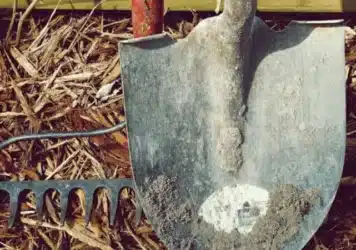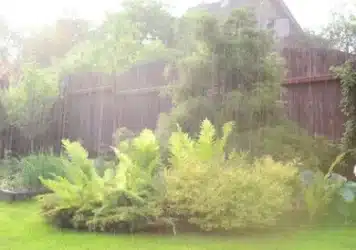Landscape Design Principles to Increase Your Home Value
A thoughtfully planned landscape design can significantly improve your living space and home value. Whether lighting to enhance a cheery mood, blooming plants to provide color in a flower garden, or shade structures to keep things cool, a gorgeous landscape design can add 10 to 15 percent to a home’s value in a hot market.
Understanding landscape design principles will increase your creativity and help you generate new ideas. This article focuses on the primary landscape design principles to help unlock your creativity.
What Are Landscape Design Principles?
Landscape design principles help homeowners and professional landscapers move landscaping ideas to reality. They are guidelines that help guarantee a yard is unified, cohesive and beautiful. Ideally, these principles shed light on how your landscape feels, flows and works. However, they have no specific order or hierarchy. You can use a few particular guides or apply them all, depending on the situation.
Six Key Landscape Design Principles
Simplicity
A well-defined and straightforward landscape design provides more functionality and ensures easier maintenance. It is crucial to keep your design clean, neat, and uncluttered. Start by clustering plants to avoid a scattered appearance and minimize elements that do not provide improvements or impact on your plan. Additionally, you can achieve a simpler and more unifying design by using common motifs that give balance and rhythm.
Unity
In landscaping, unity refers to the repetition and consistency in a yard design. Repetition and consistency help fit diverse landscaping elements together to create a common theme or unit. You can achieve unity through the repetition of some aspects of design, including plants and decor. Additionally, you can achieve unity by using connections like fences, stairs, walkways, and paths to physically link areas.
Variety
A well-defined landscape design should create visual interest. You can achieve this interest by carefully selecting diverse shapes, sizes, and forms in the design elements. Ideally, a more varied design produces more beautiful results all year round. For example, when you opt for various plant species, your yard will be attractive throughout different seasons.
Balance
Balance in a landscape design implies a sense of equality. Every element that you place in your design carries a certain visual weight with it. When creating a plan, you should ensure the importance of every aspect feels even. You can achieve proper balance by aiming for each element to mirror the other through a careful matching process. For example, repeating similar features such as rocks or plants will help unify different areas. Further, you can opt for an informal balance by choosing elements that are equal but not matching.
Emphasis
Emphasis is a popular landscape design principle. It centers on the idea that you can accentuate parts of the design using texture, color, or form. Emphasis helps provide interest and draw the observer’s eye when looking at an environment. Bright colors, interesting plants, and beautiful art are great ways to use this landscape design principle. For example, you can build emphasis around a pollinator garden by using plants to attract hummingbirds or butterflies.
Proportion and Size
Proportion and size refer to the design elements in relation to their environment or each other. For example, you can place tall-growing shrubs around your property to dominate the other plants in your yard. However, before you do so, consider how you will balance them out with other plants in that section of your yard.

Using Landscape Design Principles in Residential Properties
Step 1: Determine your landscape design needs
Make a list of all your landscaping needs to ensure the design incorporates all use cases. During the early stages of your design, determine whether you need a play space for kids, a spacious outdoor living area, or a dedicated area for growing vegetables.
Step 2: Identify the focal point for your landscape design
A focal point refers to the most prominent part of your yard. It provides a sense of stability for your yard. As long as the piece is significant, it can serve as a robust foundation and focal point. For example, a focus may be a large flowering tree, a pool, or a gazebo.
Step 3: Make a landscape design plan
Do a rough sketch and incorporate your ideas of where you want to place things in your yard. Design the style you want to go for and the plants that can thrive in your yard. You can use apps like PlantTAGG to help you understand what will work best in your area and specific yard.
Step 4: Implement the plan
Implement your landscaping plan by starting at your focal point. Start by installing the big plants first before you go to the other elements. When implementing your project, keep in mind all the principles discussed above.
Should You Hire a Landscape Design Professional?
Undoubtedly, a good landscape design has a significant impact on a home. Unfortunately, it’s not as simple as you might think. As such, you can work with your local garden center or a landscape design professional to simplify the process around design, maintenance, and care for your yard.
You can use PlantTAGG to help you make better plant selection choices and planting decisions, as well as to help with care guidance on when exactly to water, prune and fertilize the plants in your new landscape design. Text ‘PLANTS’ to 46376 to get started – PlantTAGG is free to use with nothing to download or install.
If you are a professional landscaper, we’d love to talk with you about the PlantTAGG Landscaper Program. It’s a great way to build your brand, get referrals, and offer a unique value-add to your customers. Get in touch today to find out if you qualify for this incredible new program!













Comments (3)
Well this is an awesome post and written very well. Your point of view is very good.
I appreciate that you included the PlantTAGG app as an additional resource, it’s a great way to get additional information on what plants might work best in the area and design plan. My only suggestion would be to clearly tie each principle back to the design, such as how you can achieve simplicity by clustering plants or how balance can be achieved through repetition of elements. All in all, great overview on primary landscape design principles!
It is important to understand the basics and important conditions before starting any kind of landscaping project. My top tip is to add a multi-seasonal element to the design plan. This could involve strategic planting choices that yield blooms or foliage for more than one season to create a continuous and eye-catching landscape that bounds with life. Additionally, adding an inviting hardscape feature such as a patio or walkway can help landscape design stay interesting all-year round. Keep up the great content!